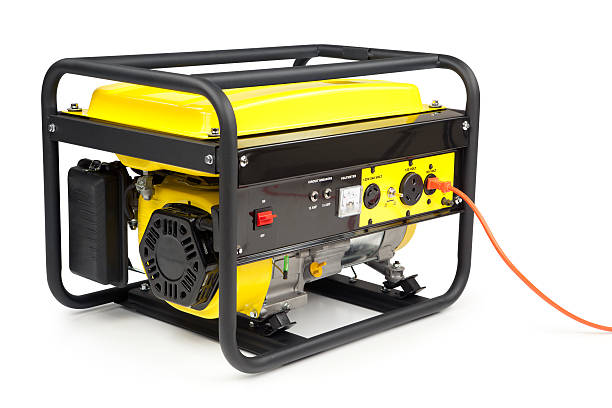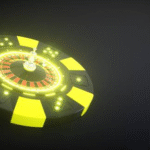Modern industries rely on power systems that deliver consistent energy while keeping expenses manageable. Every component within these systems plays a role in determining overall efficiency and operational cost. When energy losses rise, utility bills follow.
To address this challenge, one area that demands attention is the generator’s internal assembly. Within that setup, the electric generator stator stands out as a crucial element for reducing unnecessary energy waste. Let’s explore the benefits of the stator to lower the electric costs.
Precision in Design Leads to Better Energy Flow
The way a generator performs depends heavily on how well its core components are designed. A stator that uses high-quality magnetic materials and optimized lamination minimizes resistance and heat buildup. This allows current to flow smoothly, cutting down on energy loss. As a result, more of the generated power is converted into usable electricity rather than dissipating as heat.
Improved design also extends the life of the entire system. Less heat means fewer breakdowns and maintenance interruptions. The direct benefit is a steady reduction in energy costs over time. Investing in a stator that emphasizes precision in construction ensures better long-term savings and smoother power delivery.
Material Efficiency Reduces Wastage
A key factor influencing generator efficiency is the type of material used in the stator core. Advanced alloys and specially treated steels increase magnetic performance while keeping electrical resistance low. When the material conducts magnetic flux efficiently, the energy required to maintain output decreases. This efficiency directly translates to reduced electricity consumption during operation.
In addition, modern materials are engineered to handle fluctuating loads without losing performance. That stability keeps production lines running without unnecessary energy surges or losses. By focusing on durable and efficient materials, facility managers can realize measurable cost savings throughout the system’s lifecycle.
Thermal Control Enhances Performance
Temperature management plays a vital role in determining how effectively a generator operates. An efficient stator regulates heat by allowing air or coolant circulation around its windings and core. This balance prevents overheating and ensures continuous energy conversion. The less strain placed on the stator, the lower the power draw required to maintain operation.
Overheating causes insulation breakdown and reduced magnetic responsiveness. A well-designed stator reduces these risks, meaning the system uses less energy to produce the same output. In industries where power usage is constant, improved thermal control can cut electricity costs significantly over months and years.
Reduced Magnetic Losses Save Power
Every magnetic field within a generator affects how much energy is consumed and how much is wasted. In older or poorly designed stators, stray magnetic fields can lead to energy leakage. That leakage becomes measurable power loss, ultimately reflected in higher bills.
Modern stator designs address this issue by refining the magnetic path and minimizing unwanted flux. High-grade laminations prevent eddy currents from forming inside the core. These enhancements result in smoother, cleaner energy conversion and reduced consumption. The effect results in more stable performance and substantial savings in the overall energy budget.
Extended Equipment Life Brings Cost Stability
Frequent maintenance and equipment failure create unplanned expenses. A reliable stator lowers these risks by ensuring consistent operation. When the stator functions efficiently, stress on related components such as bearings, rotors, and cooling systems decreases. This stability reduces downtime and maintenance costs.
Longer equipment life also means capital investments can be spread over more years of production. Companies gain cost predictability, which makes budgeting simpler. Over time, this reliability compounds into major financial advantages. Energy efficiency, therefore, becomes not just a technical goal but a strategic one that supports long-term sustainability.
Consistent Output Improves Power Quality
Energy efficiency is not only about using less power but also about maintaining consistent output. A generator that produces clean, stable electricity prevents fluctuations that waste energy or damage connected machinery. The stator contributes directly to this steadiness by maintaining uniform electromagnetic balance.
When power quality remains high, equipment downstream operates without interruptions or inefficiencies. Motors run at designed speeds, lights maintain stable brightness, and systems avoid voltage spikes. These benefits all lead to fewer losses and better utilization of energy resources. The result is measurable improvement in the operational economy.
Lower Operational Heat Cuts Auxiliary Costs
Cooling systems can consume a surprising amount of energy, especially in industrial environments. If the generator’s stator design minimizes heat generation, less auxiliary power is needed to maintain safe temperatures. This reduction lowers the load on fans, pumps, or HVAC systems connected to the setup.
Fewer cooling requirements also mean less wear on those auxiliary systems. This creates a dual advantage: reduced energy consumption and extended lifespan for supporting equipment. Efficient stators thus provide a chain reaction of savings that extends beyond the generator itself.
Improved Sustainability with Long-Term Savings
Energy-efficient components help companies meet environmental goals without sacrificing productivity. A stator that reduces energy losses directly contributes to lowering carbon emissions. For industries working toward cleaner operations, this aligns economic goals with sustainability targets.
The savings go beyond electricity bills. Lower energy use reduces the environmental footprint and strengthens compliance with global efficiency standards. In many cases, efficient generators also help companies qualify for energy incentive programs, adding financial benefits to environmental responsibility.
An efficient electric generator stator plays a central role in cutting energy expenses by improving magnetic performance, reducing heat, and ensuring consistent power output. Through precision engineering and material innovation, it transforms how energy is used and conserved across industrial systems. The result is a reliable source of power that delivers maximum output with minimal waste. Businesses that prioritize efficiency in their generator components secure both financial stability and environmental progress in the years ahead.



